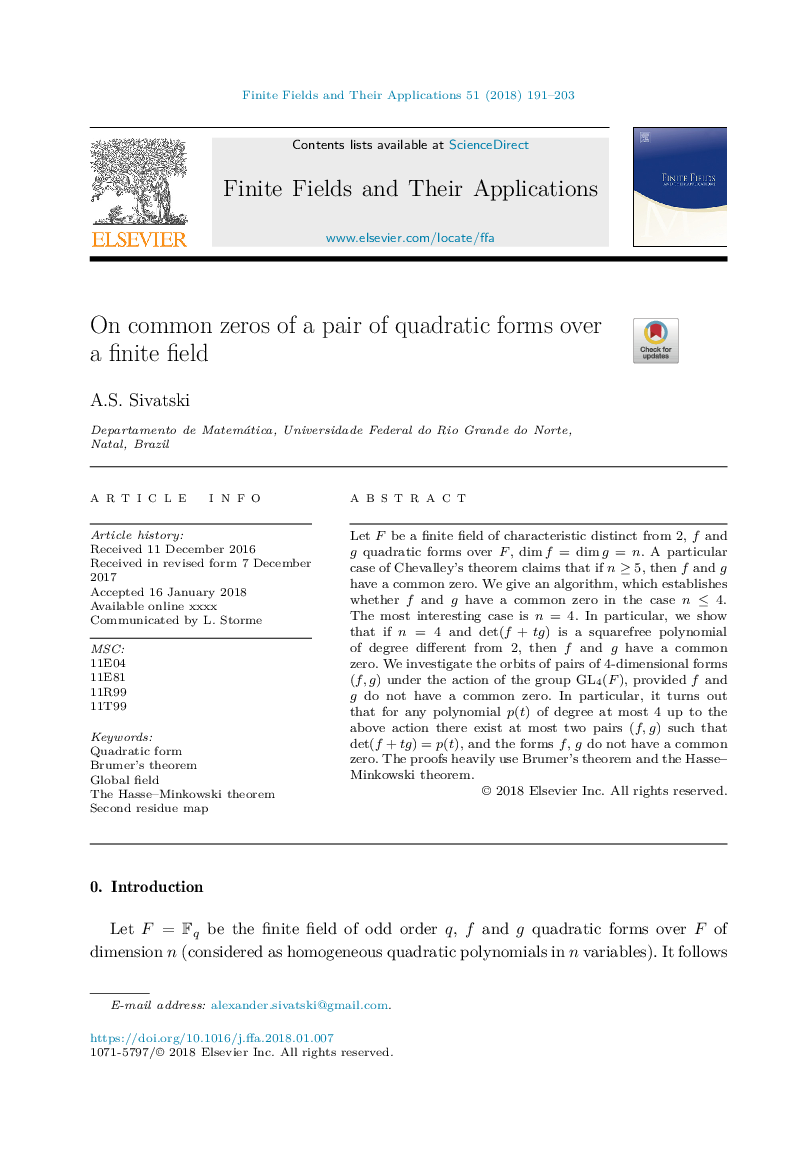| Article ID | Journal | Published Year | Pages | File Type |
|---|---|---|---|---|
| 8895661 | Finite Fields and Their Applications | 2018 | 13 Pages |
Abstract
Let F be a finite field of characteristic distinct from 2, f and g quadratic forms over F, dimâ¡f=dimâ¡g=n. A particular case of Chevalley's theorem claims that if nâ¥5, then f and g have a common zero. We give an algorithm, which establishes whether f and g have a common zero in the case nâ¤4. The most interesting case is n=4. In particular, we show that if n=4 and detâ¡(f+tg) is a squarefree polynomial of degree different from 2, then f and g have a common zero. We investigate the orbits of pairs of 4-dimensional forms (f,g) under the action of the group GL4(F), provided f and g do not have a common zero. In particular, it turns out that for any polynomial p(t) of degree at most 4 up to the above action there exist at most two pairs (f,g) such that detâ¡(f+tg)=p(t), and the forms f, g do not have a common zero. The proofs heavily use Brumer's theorem and the Hasse-Minkowski theorem.
Keywords
Related Topics
Physical Sciences and Engineering
Mathematics
Algebra and Number Theory
Authors
A.S. Sivatski,
